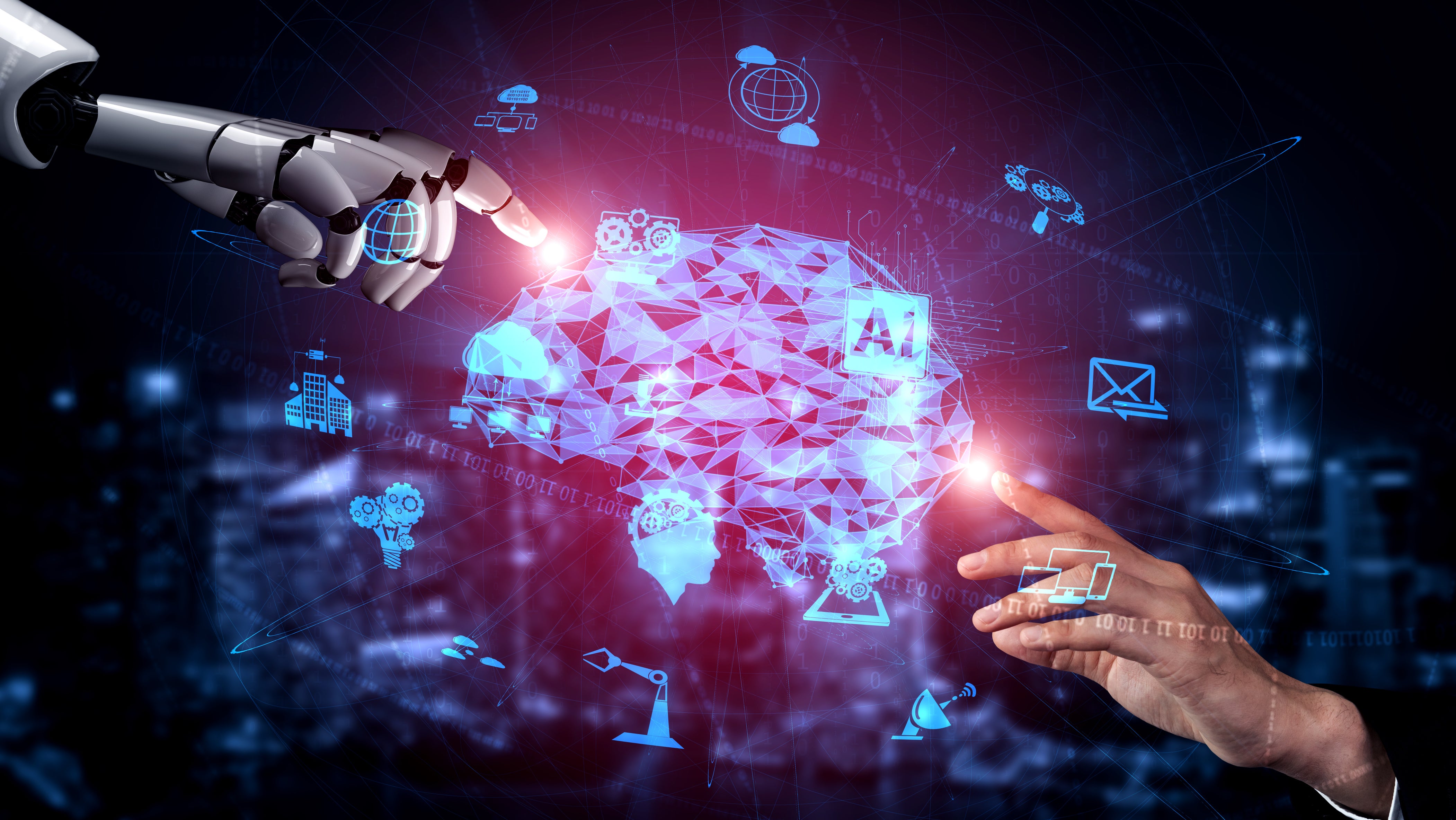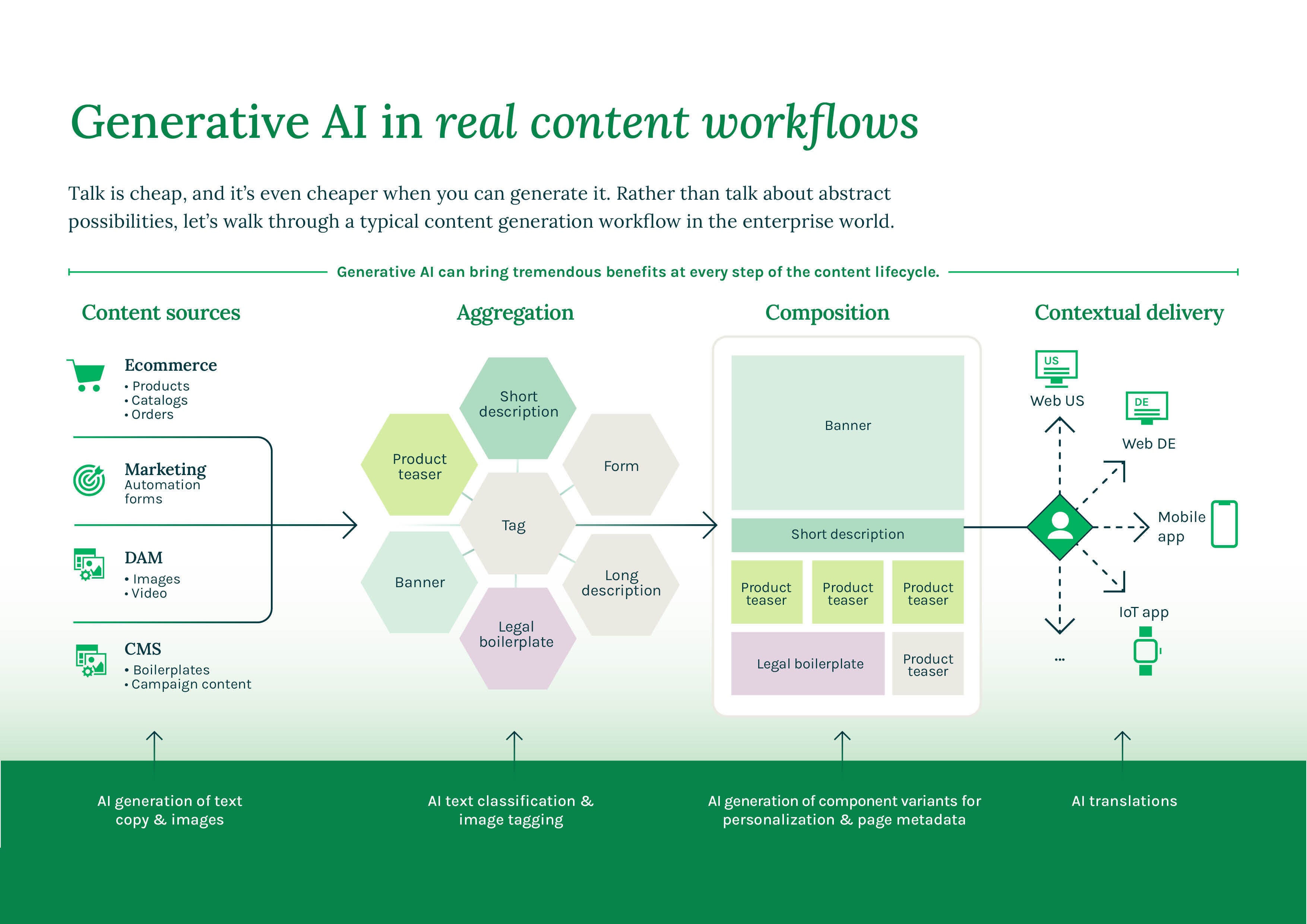The intelligent future of content management
THE ARTICLES ON THESE PAGES ARE PRODUCED BY BUSINESS REPORTER, WHICH TAKES SOLE RESPONSIBILITY FOR THE CONTENTS

Magnolia CMS is a Business Reporter client.
Better, faster digital experiences built with generative AI.
Enterprise marketers today are tasked with continuously delivering engaging, personalised digital experiences across multiple channels. To attract, convert and retain customers, your marketers must present relevant content, in an optimised format, no matter how customers want to access information or make purchases.
That means personalizing and optimising digital content, crafting consistent digital experiences at each moment in the customer journey, and giving marketers ways to reuse content and manage all experiences from a single place.
But in a fast-paced business, it can be difficult to keep up with user expectations, not to mention the competition.
Generative AI stands to change that. With the rise of generative AI technologies and their integration into content management systems and digital experience platforms, we’re on the cusp of a transformative leap in the speed and scale of personalised content creation for marketers and editors.
So how can generative AI complement marketing teams and result in better, faster digital experiences at scale today?
Generative AI for content creation
Integrating a generative AI model into your content management system or digital experience platform allows you to optimise content production and save valuable resources. Here are some examples:
Drafting marketing copy: While applications will differ in their user interface (UI) and output, most can be used to generate headlines, meta descriptions, alt texts or fleshed-out blog and landing page copy.
Summarising videos or website data: Generative AI tools such as ChatGPT and Copy.ai scrape publicly available data to enhance their text-generation capabilities. You could use those to summarise a podcast’s talking points or draft a TLDR for a blog post.
Developing content briefs and outlines: Some applications offer templates aimed at marketing teams, whereas others require you to prompt the language models to deliver one, either based on your company profile or competitors’ branding choices.
Brainstorming: Every marketer has gone through a creative block. Especially in remote teams where a colleague is not always available, bouncing ideas off AI technology can be a great starting point.
Repurposing copy for social media: Simply feed your blog copy into generative AI algorithms and ask for a LinkedIn post or Instagram caption based on your content.
Analysing competitors: Whether you’re analysing a competitor’s word choices in headlines, their use of technical jargon, or their entire stylistic preferences, a machine learning model makes en masse analysis easy.
It’s crucial that generative AI capabilities are integrated seamlessly into the platform your teams use to create content. This accelerates the AI training process and makes content generation and optimisation scalable when AI tools remain available with the unified user interfaces and editorial workflows teams already use daily.
So how can such text creation programs help with your day-to-day editorial work?
- Automatic generation of components (text, images, or a combination of these) and even entire pages
- Automatic generation of component variants for personalisation
- Automatic generation of metadata and image description (SEO and OG) to optimise content before publication
- Automatic generation of image descriptions based on image tags
- Automatic tagging and text classification for better searchability
Generative AI for images and logos
AI image generation tools can be helpful in the content creation process. Sometimes they can simply help get a rough idea across, or they can help editors generate images that comply with brand standards without getting stuck in a graphic designer’s ticket queue.
Sample use cases include the automatic generation of new images during operation, the modification of existing images, and automatic recognition and indexing of images for better searchability.
AI translation tools
AI translation gives you access to markets that would otherwise be out of reach, but it’s important to prioritise your needs to find the right solution for your strategy. Certainly, the quality of translation is important to everyone. However, you should assess whether a more accurate translation is worth the investment. Perhaps start with a rough translation to understand the demographics and invest in fine-tuned localisation after you’ve gathered some data.
These considerations are important because it’s easy to get hung up on language support and quality alone. While it’s nice to have a tool that can theoretically translate content into 30 other languages, you may want to choose a different solution because it integrates better with another tool or offers the workflow your team needs, be it a customisable user interface or SEO features.

Adding generative AI to your digital delivery workflows
The AI genie is out of the bottle. Generative AI will continue to shape the digital landscape and transform how we do business, no matter the industry.
The days when marketers could reach thousands of customers with the same message are long gone. Contemporary audiences increasingly seek tailored experiences that resonate with their individual preferences and past engagements. The omnipresence of digital marketing platforms in all our lives has only catalysed this transformation: 26 per cent of customers are already using five or more unique communication channels during their purchase experience.
We can already see how models such as ChatGPT let your marketers generate personalised content in seconds, giving a magic wand to those who were previously excluded from the creative process and streamlining the workflows of content production teams.
And this capability gets even more powerful in combination with the fine-grained datasets powering modern marketing technology. Augmented by sophisticated analytics tools leveraging automation and AI, marketers can meticulously track every customer segment’s behaviour patterns and purchasing trends and relate them to business interactions and social media engagements. They can then extract actionable insights from all that data to inform future personalised strategies – and generate content directly appealing to these segments.
Learn how your team can get started with AI
Magnolia provides a composable digital experience platform, made for your real-world needs and ready for AI today. With a track record of 100 per cent project success and over 450 enterprise customers, Magnolia is the platform of choice for leading enterprises, including American Express, JetBlue, The New York Times, CNN, Sanofi, Sainsbury’s, Generali and Ping An.
Learn more about generative AI and how you can start incorporating it into digital delivery today - and be prepared to adapt as the technology continues to evolve.
Subscribe to Independent Premium to bookmark this article
Want to bookmark your favourite articles and stories to read or reference later? Start your Independent Premium subscription today.
